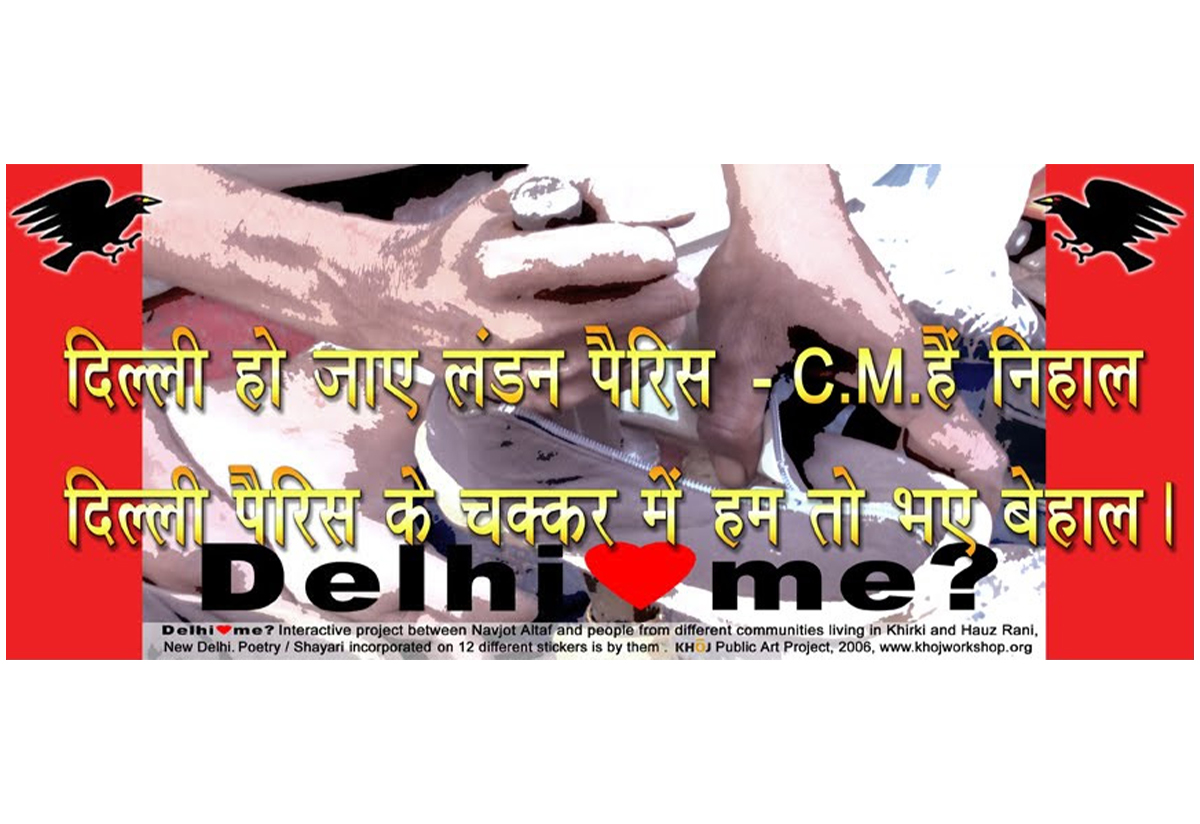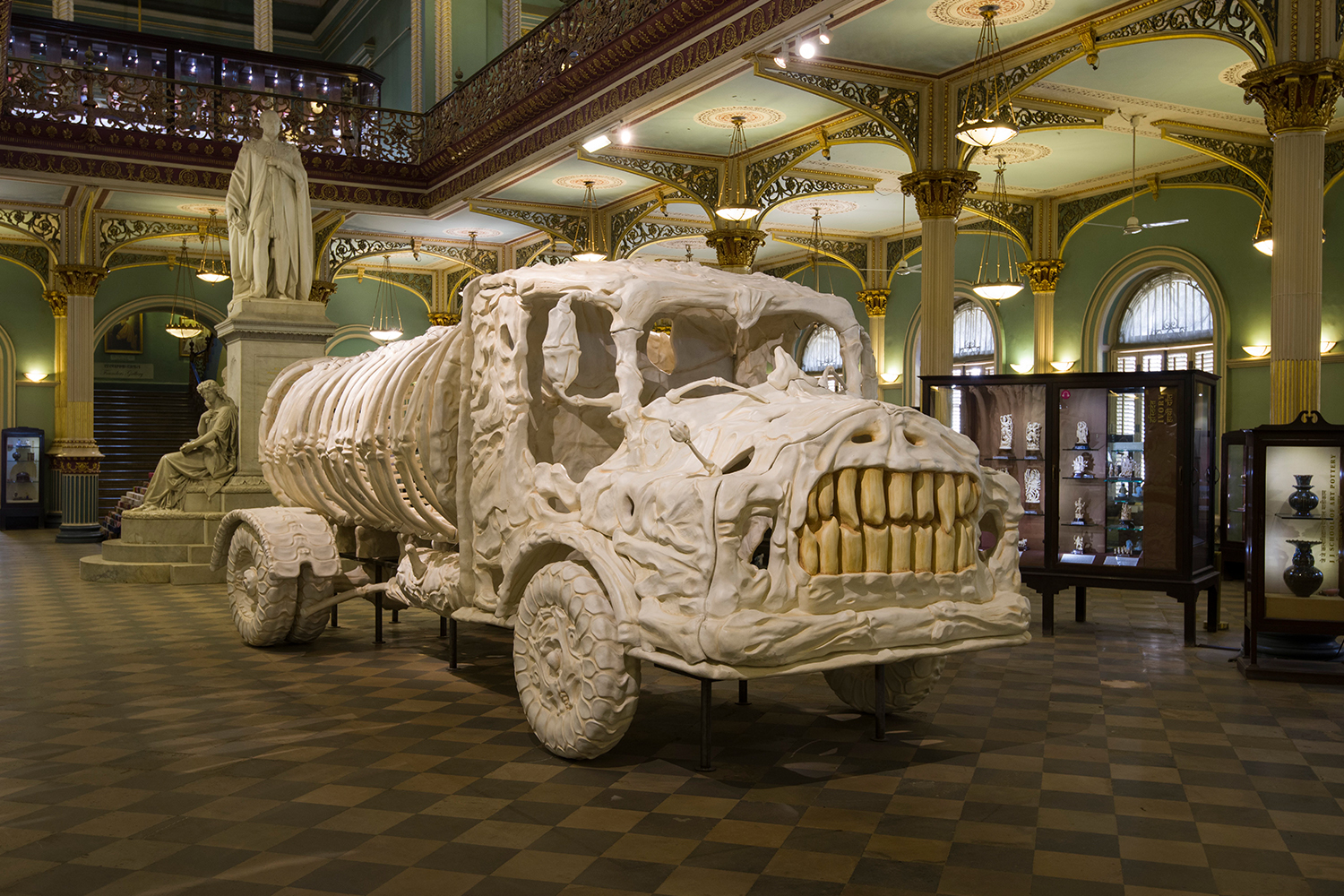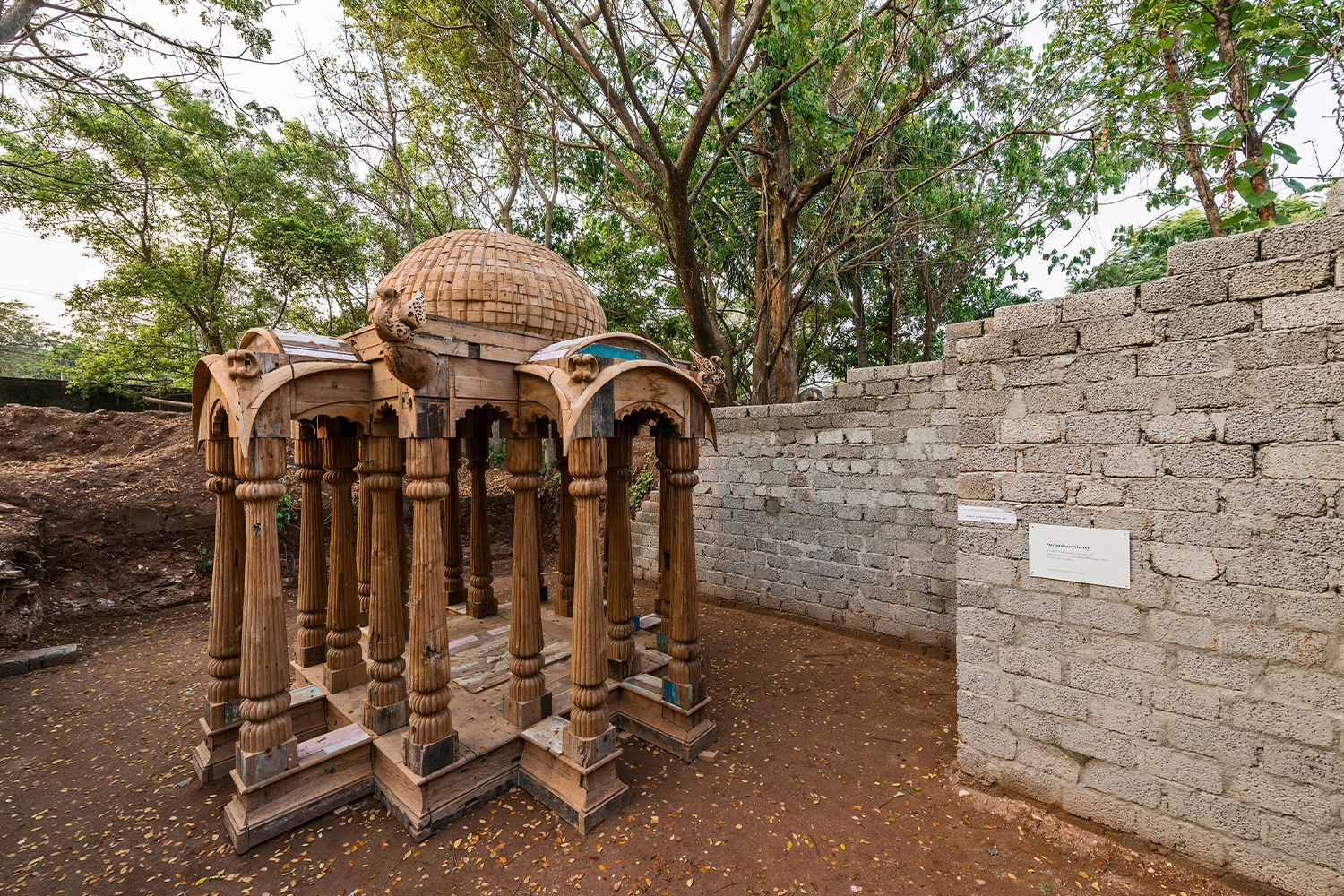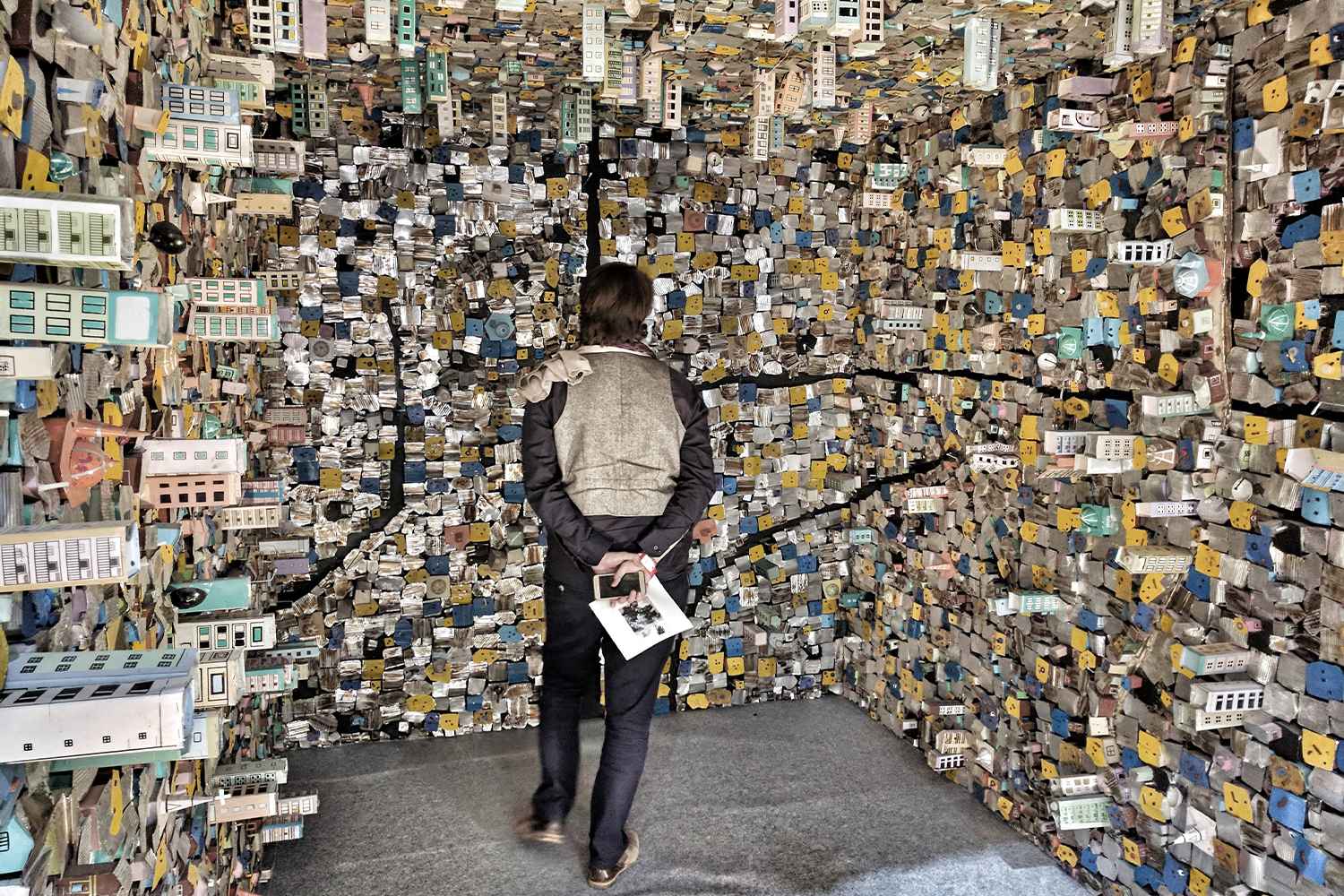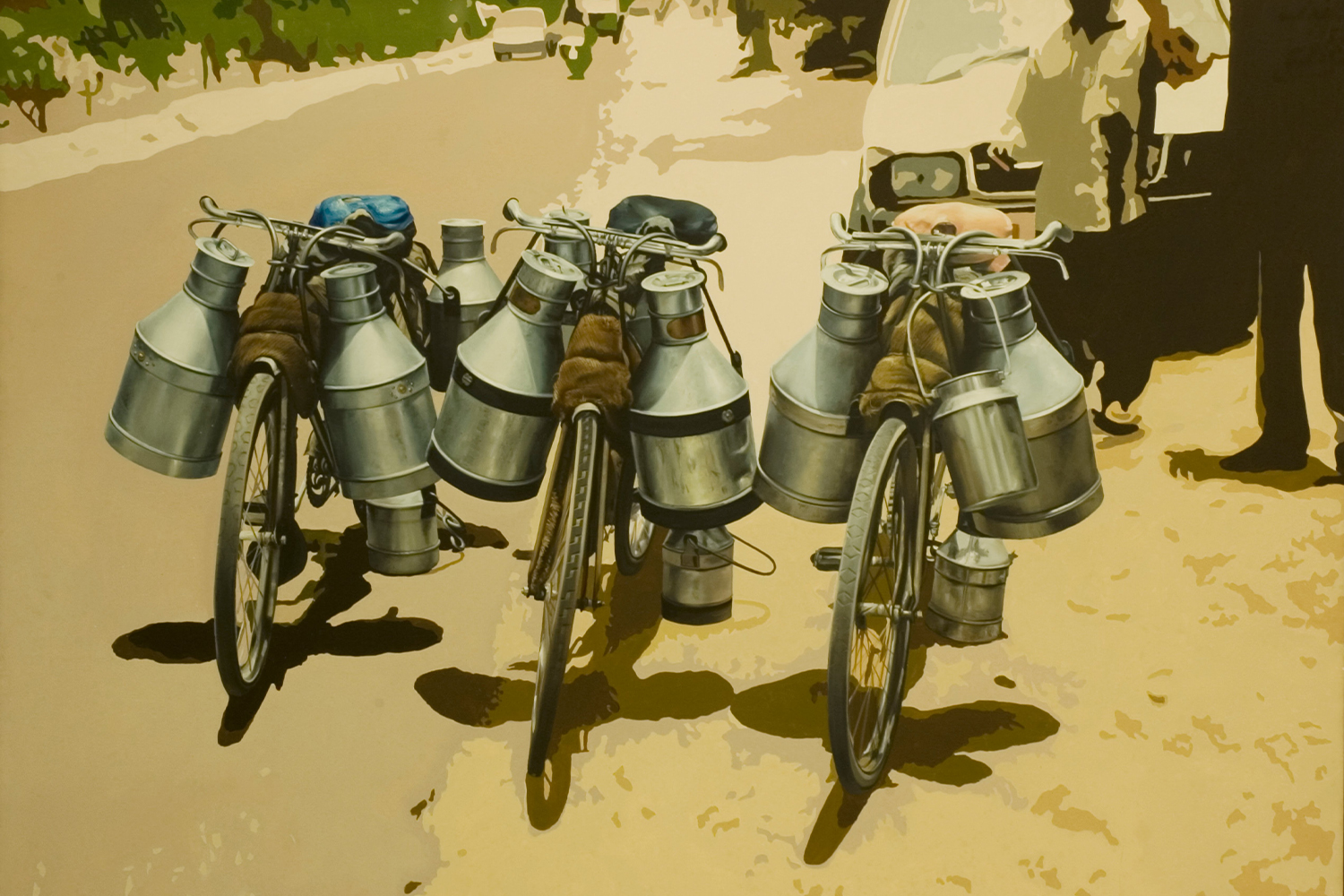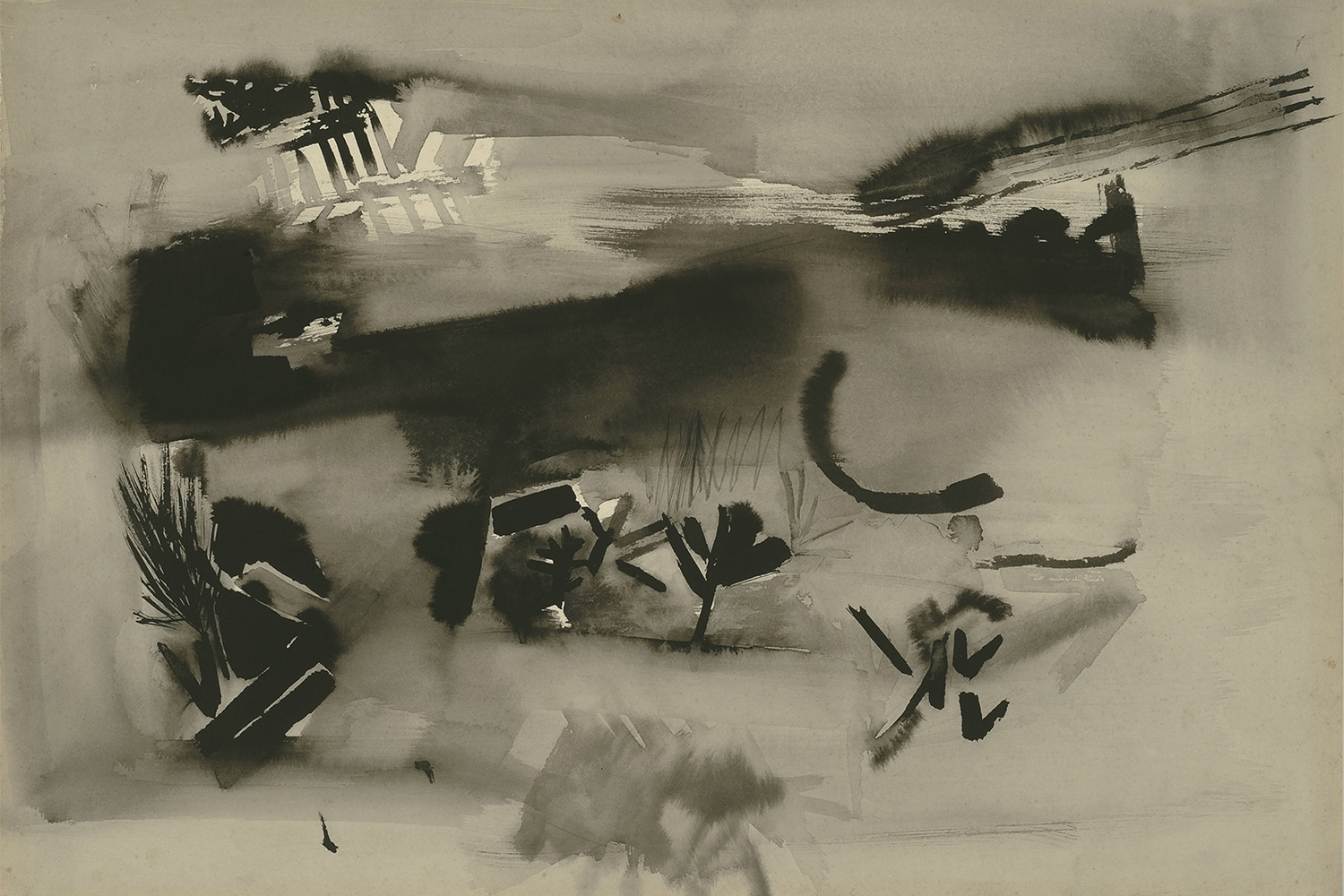ARTICLE
Contemporary Indian Art
Indian art received little global attention until the economic liberalisation in the 1990s, which resulted in increased interactions and participation of foreign curators, collectors and art institutions in Indian art. New galleries, art fairs and artist residencies have also provided spaces for contemporary art theory to interact with the history of art. Art scholars of the post-liberalisation period suggest that the present-day art scene in India is the result of a lopsided globalisation, where Western tastes have directly or indirectly dictated the sales and conversations around Indian art. They attribute this to factors such as selective foreign investment via auction houses like Sotheby’s and Christie’s, coupled with the success that some practitioners, such as Krishna Reddy, Vivan Sundaram and Anish Kapoor, found abroad, even before the boom period.
Indian art first gained commercial and cultural recognition as a commodity within Asian markets through organisations and events like the Japan Foundation, the Fukuoka Asian Art Museum, the Singapore Biennale and the Shanghai Biennale, which also attracted keen interest from Western buyers. India’s newly opened-up economy also allowed artists to participate in such events as representatives of the South Asian cultural space. Presented with more opportunities to show their work internationally, Indian artists have had to cater to outdated Western assumptions about Indian art, while continuing to push the boundaries of Indian art beyond modernism, often despite limited support from Indian institutions and the domestic art market. As a result, most artists who have emerged since the 1990s, such as Mithu Sen, Subodh Gupta, Bharti Kher, Shilpa Gupta, Sudarshan Shetty, Jitish Kallat and Neha Choksi, find their place in the Indian art market and within the experimental sphere through an eclectic practice that employs traditional as well as contemporary mediums, and carries social commentary.
In the Indian art market, paintings and sculpture — the modernist works in particular — continue to see higher saleability compared to conceptual, digital or installation art. However, this disparity has reduced significantly in recent years, especially as more collectors and investors begin to accept the notional value of art objects, as represented by authenticity certificates and Non-Fungible Tokens (NFTs), which function as proxies for works that cannot be sold as unique objects, such as digital artworks.
Installation and performance artists continue to be funded largely through grants from organisations that specifically support the broad needs of contemporary art, such as the India Foundation for the Arts (IFA), the Foundation for Indian Contemporary Art (FICA), Goethe Institut/Max Meuller Bhavan and the Inlaks Shivdasani Foundation. Residencies such as HH Art Spaces, Khoj International Artists’ Association, St+art India Foundation and 1Shanthiroad serve to provide cultural visibility to these artists. Other artists such as Sonia Khurana and Nikhil Chopra, who work exclusively with non-traditional media, receive most of their support from Western institutions such as the Metropolitan Museum of Art in New York, Centre Pompidou in Paris and large-scale exhibitions such as the Gwangju Biennale and documenta, which have a major impact on global art discourse.
Another development of the postmodernist sentiment in Indian art has been the establishment of artist and curatorial collectives like Raqs Media Collective, Desire Machine Collective and CAMP, which were founded as a move away from the glorified modernist ideal of the lone artist.
The boom period of the early 2000s saw a surge in Indian art sales to foreign collectors through Indian galleries and auction houses like Saffronart, which expanded the Indian collections of foreign institutions and boosted the careers of many living artists. Following the boom, works by members of the Bombay Progressive Artists’ Group — and a few others, such as Amrita Sher-Gil — continued to set records at auction houses. The highest price for an Indian artist’s work so far is INR 29.3 crore for an untitled work by VS Gaitonde, sold in 2015 at a Christie’s auction in Mumbai.
Several significant international exhibitions from the 1990s were also instrumental in shaping artist careers as well as public perception of Indian art. Some of these were Edge of Desire: Recent Art in India (2005), which was shown at multiple venues in Australia, Mexico, the USA and India; The Empire Strikes Back (2007) at Saatchi Gallery, London; Indian Highway (2008–09) at Serpentine Gallery, London; Convergence: Contemporary Art from India and the Diaspora (2013) at the William Benton Museum of Art, Connecticut; and Midnight to the Boom: Painting in India after Independence (2013) at the Peabody Essex Museum of Art, Massachusetts. The 2000s have also seen recurrent international art events being held in India, such as the Kochi-Muziris Biennale, the India Art Fair, the Serendipity Art Festival, the Delhi Photo Festival and the Chennai Photo Biennale, all of which have contributed to making the Indian art scene more global. Retrospective exhibitions are serving to highlight the careers of Indian artists who span both modernist and postmodernist sensibilities, such as Nasreen Mohamedi, Vivan Sundaram, Jeram Patel, KG Subramanyan and Arpita Singh. Most of these have taken place after the boom period, with the establishment of private museums such as the Kiran Nadar Museum of Art and extensions to the structure of existing institutions such as the National Gallery of Modern Art in New Delhi.
Contemporary Indian art practices and platforms have allowed for the emergence of questions and discourse related to censorship, public engagement with contemporary art, and the gendered power imbalances in the art world. These have found momentum in incidents like the 2007 controversy at Maharaja Sayajirao University (MSU) in Baroda, the self-imposed exile of MF Husain from 2006, and the MeToo movement since 2018. Practitioners such as CAMP, Shaunak Mahbubani, Raqs Media Collective and Meenakshi Thirukode, as well as organisations such as Khoj, Goethe Institut and Experimenter, have held exhibitions, special programmes and workshops on the subject of contemporary politics around art in India.
Bibliography
Adajania, Nancy. “New Media Overtures Before New Media Practice in India.” In Art and Visual Culture in India 1857-2007, edited by Gayatri Sinha, 266–81. Mumbai: Marg, 2009.
“The Modern Indian Art.” In An Introduction to Indian Art: Part II. National Council of Educational Research and Training, 2020. https://ncert.nic.in/textbook/pdf/lefa107.pdf.
Chatterjee, Mortimer. “The Iconic Exhibitions That Have Defined Indian Art.” GQ India, December 26, 2016. Accessed July 9, 2021. https://www.gqindia.com/magazine-story/the-iconic-exhibitions/.
Khare, Archana. “MF Husain: The Master Dies in Exile.” India Today, June 9, 2011. Accessed July 9, 2021. https://www.indiatoday.in/india/north/story/mf-husain-the-master-dies-in-exile-135346-2011-06-09.
Myers, Kathryn, and Susan Bean. Convergence: Contemporary Art from India and the Diaspora. Storrs: William Benton Museum of Art, 2013.
Narula, Monica. “How to Be an Artist By Night”. In Art School (Propositions for the 21st Century), edited by Steven Henry Madoff. New York: MIT Press, 2009.
Neelakantan, Shailaja. “Art-World Buzz is India and its Progressives.” The Wall Street Journal, July 5, 2004. Accessed July 11, 2021. https://www.wsj.com/articles/SB108897558757555013.
Singh, Kishore. “Indian Art Market on a Slow Incline.” BW Businessworld, September 25, 2018. Accessed July 13, 2021. http://www.businessworld.in/article/Indian-Art-Market-On-A-Slow-Incline/25-09-2018-160798/.
Singh, Pooja. “Why the Indian Art World is Slow to Adapt to Digital Era.” Mint, July 1, 2020. Accessed July 9, 2021. https://www.livemint.com/news/business-of-life/indian-art-world-slow-to-adapt-to-digital-era-11593610054707.html.
Sinha, Gayatri. “New Persuasions in Contemporary Indian Art.” In Voices of Change: 20 Indian Artists, edited by Gayatri Sinha, 8–23. Mumbai: Marg, 2010.
Sooudi, Olga Kanzaki. “Art Patron as ‘Taste Scapegoat’?: Complicity and Disavowal in Mumbai’s Contemporary Art World.” Etnofoor, 2012: 123–43.
Sooudi, Olga Kanzaki. “Making Mumbai’s Emerging Art World Through Makeshift Practices.” South Asia: Journal of South Asian Studies 39, no. 1 (2016): 149–66.







